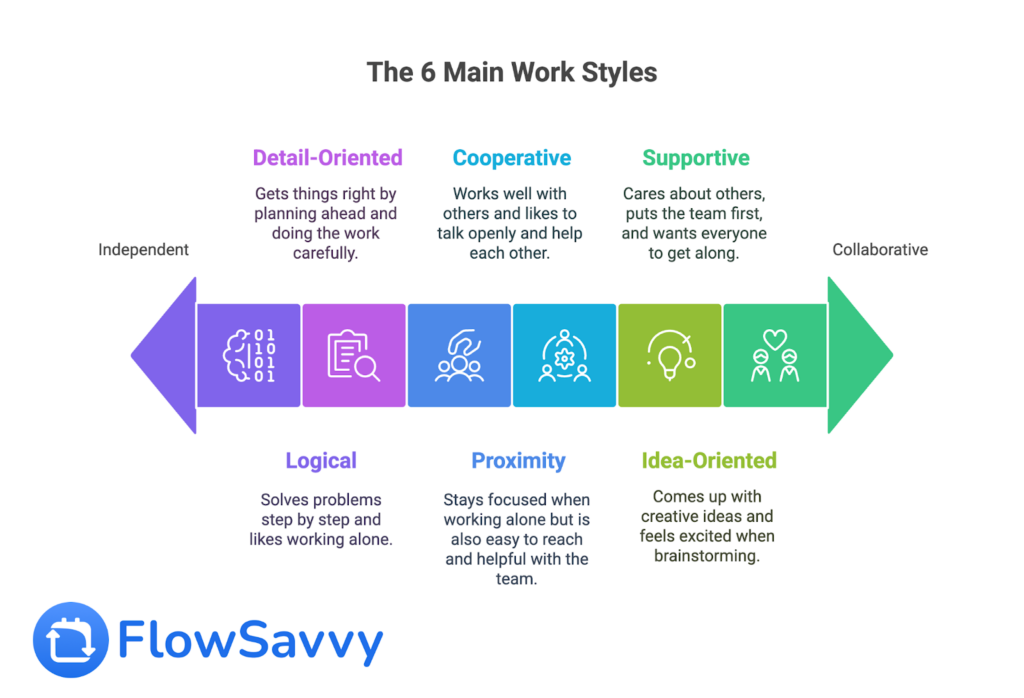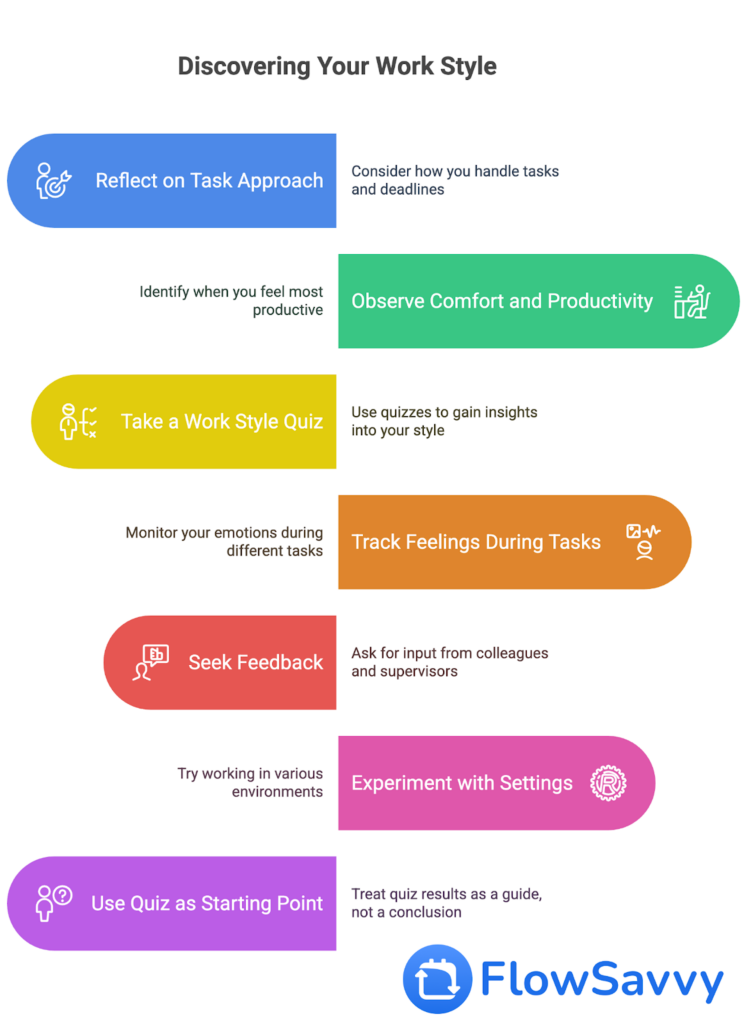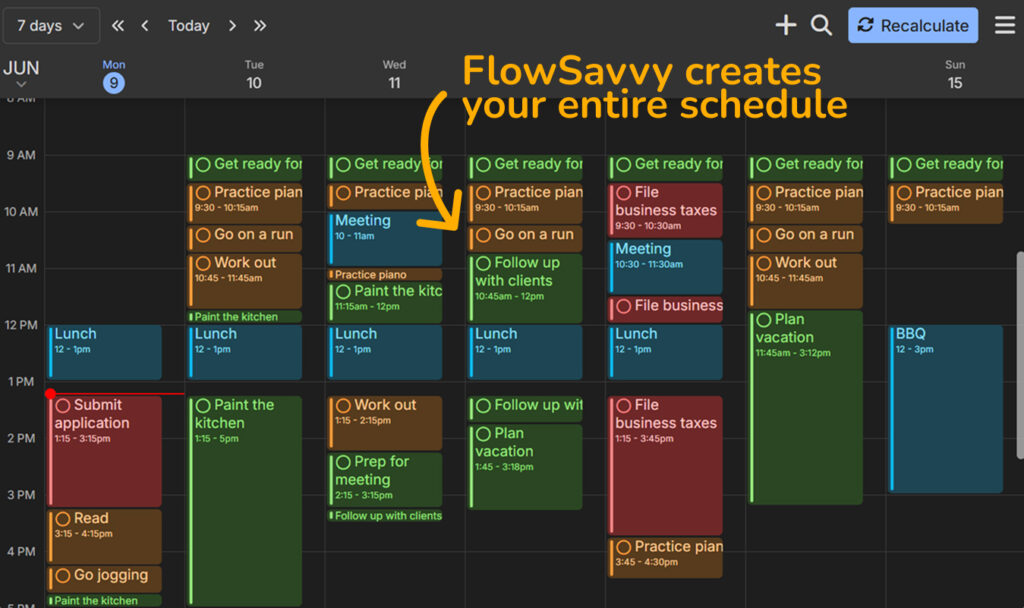Staying organized at work can be tough, especially when your way of working doesn’t match the tools or systems around you. Different work styles require different work flows, and it’s easy to feel overwhelmed when things don’t fit your style.
In this article, you’ll learn about 6 different work styles and get simple tips to help you stay organized in a way that suits you. We’ll explore how understanding your work style can make it easier to stay on top of tasks and reduce stress.
What Are Work Styles and Why Do They Matter?
A work style is the way you prefer to get things done and how you interact with others at work. It includes how you solve problems, manage time, and handle tasks, both alone and in a team. Everyone has a different style, and that’s actually a good thing!
Knowing your work style can help you do your best work. It makes it easier to plan your day, talk with your team, and stay on top of your goals. When you understand how you work, you can also find jobs or tasks that fit you better.
It’s just as important to understand the work styles of others. Not everyone thinks or works the way you do, and that’s a good thing. When teams know each other’s styles, they work more smoothly together. There’s less confusion and fewer mistakes.
Here are a few benefits of knowing work styles:
- Better communication with teammates
- Fewer misunderstandings and conflicts
- Stronger collaboration on group projects
- More balanced workloads
- Higher job satisfaction
In short, learning about work styles helps you become a better teammate and employee. It’s a simple step that can make a big difference in how you work and connect with others.
The 6 Main Work Styles

1. Logical
If you have a logical work style, you like to think things through before acting. You break problems into smaller steps and solve them one at a time. This helps you stay calm and focused, even when things get tough.
You probably prefer working alone. It gives you the space to think clearly without distractions. You also value clear instructions, knowing exactly what to do helps you work more efficiently and avoid mistakes.
Logical workers rely on facts and data, not feelings, to make decisions. You might enjoy looking at numbers, reading reports, or using past results to guide your next step. You want your work to make sense and follow a clear path.
This work style fits well with tasks that need deep focus, problem-solving, and planning.
Signs of a logical work style:
- You like step-by-step instructions
- You double-check your work
- You ask questions to understand things better
- You enjoy working through complex problems
- You stay calm under pressure
Logical thinkers bring clarity to a team. Your careful, thoughtful approach helps create strong decisions that are based on facts, not guesses
2. Detail-Oriented Work Style
If you’re detail-oriented, you notice the small things that others might miss. You pay close attention to every part of a task to make sure it’s done the right way. Even the little things matter to you.
You like to plan ahead and keep your work organized. Whether it’s using to-do lists, folders, or schedules, staying organized helps you feel more in control. It also helps you avoid last-minute stress.
Being detail-oriented means you take your time to complete tasks carefully. You check your work more than once to make sure everything is correct. This helps reduce errors and shows others they can count on you.
This work style is especially helpful in jobs where accuracy is important, like editing, accounting, or quality control.
Signs of a detail-oriented work style:
- You review your work before turning it in
- You like checklists and routines
- You keep your files and workspace neat
- You notice when something is out of place
- You take pride in doing things right the first time
3. Supportive Work Style
If you have a supportive work style, you enjoy helping others and making the team feel good. You care about how people are doing, not just what they’re doing. You’re often the person others turn to when they need a hand or someone to talk to.
You’re a good listener and pay attention to how others feel. You notice when someone seems stressed or left out. You try to include everyone and create a space where people feel safe and respected.
Supportive people work best in friendly, team-based environments. You do your best when there’s trust, kindness, and open communication. You don’t just focus on your own tasks, you care about the whole group’s success.
Signs of a supportive work style:
- You offer help before someone asks
- You listen without interrupting
- You stay calm during conflicts
- You encourage others during tough times
- You care about how your team feels
Your ability to support others helps build strong teams. People feel more connected and ready to work together when you’re around.
4. Idea-Oriented
If you’re idea-oriented, your mind is always full of new and creative thoughts. You like to ask “what if?” and imagine different ways to solve problems. You enjoy thinking about things that haven’t been done yet.
You focus on the big picture and future goals. Instead of just looking at what’s in front of you, you think about what could happen next. This helps you come up with exciting plans or new ways to improve something.
But turning those ideas into real steps isn’t always easy. You may need support from others who are good at planning, organizing, or following through. Working with different work styles can help bring your ideas to life.
Signs of an idea-oriented work style:
- You enjoy brainstorming
- You think about what’s possible, not just what exists
- You often start projects with big goals
- You get excited by new trends or tools
- You may lose interest in long tasks or details-
Your creative thinking adds energy and fresh direction to your team. It helps others see new paths they hadn’t thought of before.
5. Cooperative Work Style
If you have a cooperative work style, you enjoy working with others and being part of a team. You feel more comfortable when you can talk through ideas and share the work. Being around others helps you stay focused and motivated.
You prefer group tasks over working alone. You enjoy hearing other people’s opinions and finding solutions together. Teamwork helps you feel more connected and supported in what you do.
You value open communication. That means you like it when people speak honestly, listen respectfully, and work through problems together. You’re often the one who helps keep the group moving in a good direction.
Being part of a team gives you energy. You enjoy group discussions and collaboration, especially when everyone is sharing ideas and working toward the same goal.
Signs of a cooperative work style:
- You prefer team projects
- You ask for feedback and ideas
- You enjoy helping others succeed
- You feel more productive when working with a group
- You care about how the team works together
Your style helps build trust, connection, and progress within a team.
6. Proximity
If you have a proximity work style, you like a mix of working alone and with others. You enjoy having your own space to focus but also like being close enough to your team to talk when needed. This balance helps you stay both productive and connected.
You prefer working near your teammates, even if you’re doing your own thing. Being able to ask a quick question or share an idea helps you feel supported. You don’t need constant interaction, but you like knowing others are nearby.
You’re also flexible. You can focus when it’s quiet, but you can also join group work without a problem. You adapt well to different work settings, whether it’s a quiet desk, a shared office, or a team meeting.
Signs of a proximity work style:
- You like quiet but not isolation
- You enjoy short chats with coworkers
- You switch easily between solo and team work
- You prefer open spaces over closed doors
- You feel more comfortable when help is nearby
Your ability to balance both worlds helps teams stay connected without losing focus.
How to Discover Your Work Style

Your work style is how you prefer to get things done and interact with others. Understanding it can help you work better and feel more confident at your job.
To start, take a moment to reflect on how you approach tasks. Do you like to plan everything first? Or do you jump in and figure it out as you go? Notice how you handle deadlines, solve problems, and respond to teamwork.
Next, pay attention to when you feel most comfortable and productive. Are you more focused when working alone, or do you enjoy group discussions? Think about times when work felt easy or enjoyable. That can show you what style fits best.
You can also try a work style quiz. Here’s a great one to start with: the Work Style Quiz by Idealist. This quiz poses thoughtful questions about your habits and preferences, helping you uncover your unique work style.
Tips to help you discover your style:
- Keep track of how you feel during different tasks
- Ask for feedback from teammates or supervisors
- Try working in different settings and take notes
- Use a quiz as a starting point, not a final answer
Learning your work style takes time, but it can lead to better choices and a smoother workday.
Turn Your Work Style Into a Weekly Plan That Works
Once you know your work style, the next challenge is actually planning your week around it. That’s where using a smart scheduling tool can really help.
Instead of manually adding tasks to a calendar and shifting them around every time your plans change, you can use a tool that automatically creates and adjusts your weekly schedule based on what you need to get done.
For example, if you’re logical or detail-oriented, you might love seeing tasks placed in specific time blocks so you can focus on one thing at a time. If you’re idea-oriented or proximity-based, having flexibility and quick rescheduling helps you adapt as new tasks or ideas come up.
Look for a planner that:
- Automatically reschedules when plans change
- Supports recurring tasks and habits
- Lets you block time for both focused and collaborative work
- Syncs with your existing calendar
FlowSavvy is a great option that checks all these boxes. It helps you plan smarter based on your task list and availability. Tools like this can lower the mental load of planning and give you a clear view of your week without all the extra clicking and dragging.
It’s one simple way to match your organization system to the way you naturally work, without starting from scratch every week.

Conclusion
Everyone works a little differently, and that’s a good thing. In this post, you learned about six common work styles, logical, detail-oriented, supportive, idea-oriented, cooperative, and proximity-based.
You also saw how understanding your style can help you stay more organized, feel less stressed, and work better with others. When your tools match the way you naturally work, your days feel smoother and more manageable.
If you want help planning your week around your own style, try using FlowSavvy to automate your planning.

